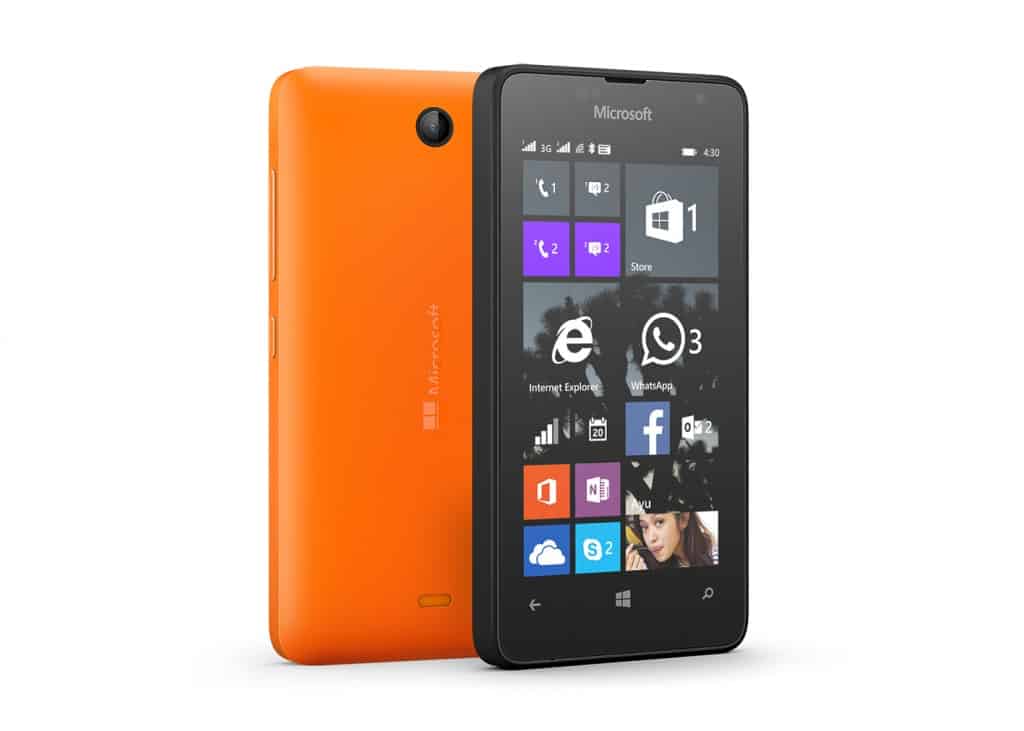The Transition
Following the purchase of Nokia’s Devices and Services division for US$7.3million and rebranding it Microsoft Mobile Oy, Microsoft has continued to build on the Lumia range, which included the 800 and 1020 (with its 41 megapixel camera). Since completion of the acquisition in April last year, they have launched, in the SA market, the Lumia 930 (June 2014), the Lumia 630 (June 2014), the dual-sim Lumia 730 (October 2014) and the first Microsoft-branded Lumia 535 (January 2015). While we are still waiting for what could be considered a ‘flagship’ Microsoft-branded Lumia device, Microsoft is going the route of creating ‘affordable’ phones to encourage the shift from feature phones to smartphones, which they really started with the 630.
This strategy, if it works, would essentially put them back in the proverbial ‘driver’s seat’ if they are able to gain traction in territories like the African continent where feature phones still dominate but also serve as the largest potential markets for smartphones in future. It speaks to the ‘mobile first’ view of the continent as well as a factor that Microsoft has shown itself to be cognisant of, namely that people who have been on feature phones are more accustomed to reliability and durability of hardware. Plus, you don’t have the battery issues that smartphones users have.
New Smartphones
At the launch of their three new smartphones recently at which I facilitated a discussion with Shaun Durandt, General Manager of Microsoft Mobile SA, and Patrick Henchie, Senior Manager, Portfolio & Product Marketing, the emphasis was repeatedly on the hardware side from a reliability/performance perspective and from an ecosystem perspective.
Last year, they also put out a Windows Phone 8.1 update designed to create a more integrated experience with the ecosystem. With the three phones launched, namely the Microsoft Lumia 640, Microsoft Lumia 640XL and the ultra-affordable Microsoft Lumia 430 Dual SIM, there will be the ability to upgrade to Windows 10, which should be out very soon.
For specs on the Lumia 640 and 640XL, see below, taken from the Microsoft press release to launch the devices. I have said before that I increasingly view smartphones the way I view cars. Most cars, for example, can get you from point A to B; we make our decision to purchase on our own unique basket of considerations, including our budget, aesthetic, what we consider most important, what we want to use it for, etc.
For Microsoft, what is critical is the continued evolution of the Windows Phone ecosystem. I have apps I use standard across OS and part of my perspective on a smartphone is determined by availability of those apps. At this stage, there are still some I can’t get on Windows Phone, like Asana and Slack, which I use extensively for work. Hopefully this will change.

Microsoft does have the advantage of its own software, such as Office, OneNote, etc, which many of us still use in our day-to-day professional lives. The dual-sim Lumia 430 could be considered entry level – one’s first smartphone – and it will come preloaded with Microsoft Office, Skype and One Drive. Retail price is expected to start at R999 in South Africa.
The Lumia 640 and 640XL will also come with a one-year subscription to Office 365 with 1 TB of OneDrive storage. Monthly contracts will start at R199 for a single sim version which is competitive.
We’ll have to wait and see how it all unfolds over the next year to get a better sense of the success of Microsoft’s approach, particularly on the African continent.
Basic Specifications
| Lumia 640 XL / Lumia 640 XL Dual SIM | |
| Operating system | Windows Phone 8.1 with Lumia Denim |
| HERE location services | Free global HERE Maps and HERE Drive+Free HERE Transit available in the Store |
| Display | 5.7” HD (1280×720, 16:9) IPS LCD, 294 PPI, Glance screen Corning Gorilla Glass 3 Sunlight readability enhancements |
| Battery | 3000 mAh battery, removable |
| Processor | 1.2 GHz dual-core Qualcomm Snapdragon 400 processor |
| Main camera | 13 MP AF, LED Flash, Lumia Camera |
| Front facing camera | 5 MP FF |
| Memory | 8GB + free OneDrive, micro SD up to 128GB |
| Dimensions | 157.9 x 81.5 x 9mm171g |
| Lumia 640 / 640 Dual SIM | |
| Operating system | Windows Phone 8.1 with Lumia Denim |
| HERE location services | Free global HERE Maps and HERE Drive+Free HERE Transit available in the Store |
| Display | 5” HD (1280×720, 16:9) IPS LCD, 294 PPI, Glance screen Corning Gorilla Glass 3 Sunlight readability enhancements |
| Battery | 2500 mAh battery, removable |
| Processor | 1.2 GHz dual-core Qualcomm Snapdragon 400 processor |
| Main camera | 8 MP AF, LED Flash, Lumia Camera |
| Front facing camera | 1 MP FF |
| Memory | 8GB + free OneDrive, micro SD up to 128GB |
| Dimensions | 141.3 x 72.2 x 8.85mm145 g |

